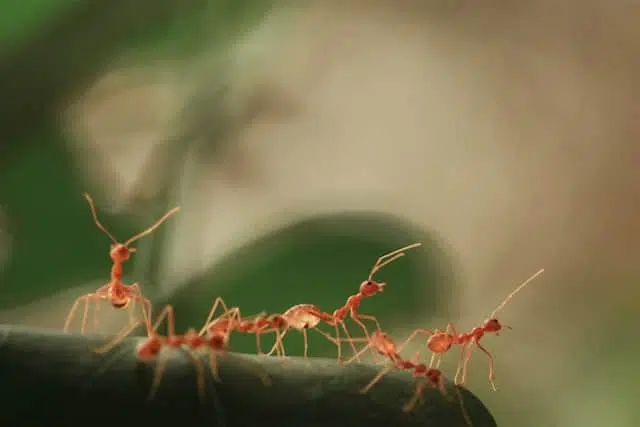Have you ever wondered if there are animals out there who are more organized than humans? Well, we can confirm that that would definitely be ants! Ants are one of the most numerous insects on this planet and are well-known for their excellent organization skills and habitation.
Here’s the Top 10 Most Unique Ant Species!
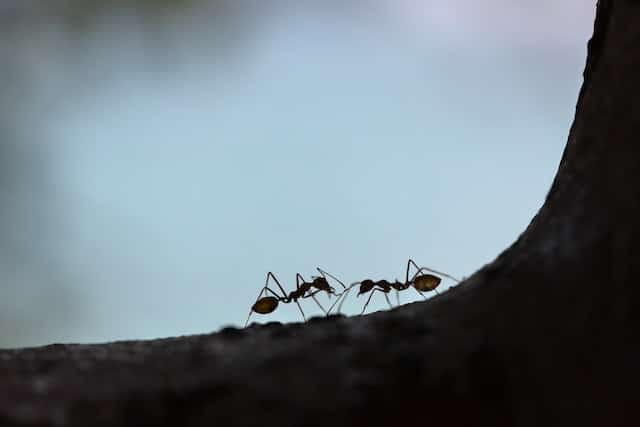
Studies show ants have certain special abilities to survive in almost every habitat. Another interesting fact about ants is they live in colonies which often become a plague for humans if these colonies keep on extending.
But even more interesting is their eusocial behavior: ants tend to live in perennial colonies where they overlap generations and generations with only one female ant. Typically, other colony members are assigned certain roles, e.g., defense, foraging, work, etc.
If you want to learn more about this super-interesting yet smallest insect, you are in the right place. This article will provide you with a complete guide on ants, mainly featuring its top ten species.
1. Argentine Ants
Argentine ants, also known as Linepithema humile, are very ordinary-looking, light to dark brown ants. They are slender looking, 2.6 to 3.2mm long insects.
When crushed, they give a musty odor. This particular type of ant doesn’t have a sting but can bite, which isn’t painful. Subsequently, they aren’t considered a threat to humans other than contaminating food.
Habitat
Notably, argentine ants are a species of the suburbs that belong to the family of Dolichoderinae. These ants originated from South America but now have spread to the USA, South Africa, and Europe.
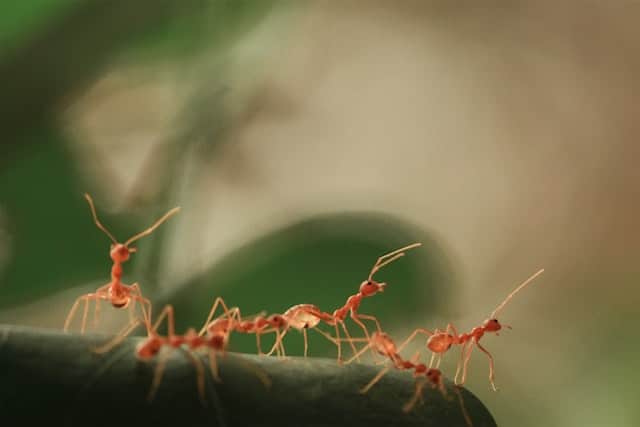
Moreover, they infest urban buildings, trees’ bases, paths’ edges, lawns, and garden beds. Besides, the argentine ants can survive in moist swamps and food residues.
Life
Importantly, the argentine ants become more active from January to June. They live in a social setup through the interconnection of their nests.
The Argentine ants drive other ants of their species out of their infestation area. Precisely, they have worker ants and numerous queen ants in each nest. They establish new colonies when their queen moves to new places. If the queen loses its wings, she cannot establish new colonies.
Worker ants produce in the spring, while the queen ants are produced earlier. The argentine queen ants then reproduce in their nests.
The queen ants live for several years while the workers survive for 10-12 months. The workers follow the food trail in a way their nests can’t be located. They prefer sugary honeydew but can feed on almost any kind of food. They can even feed on dead insects.
2. Carpenter Ants
Carpenter ants, also known as Camponotus pennsylvanicus, are black-colored ants that can sometimes have a contrasting red color to their real color, black. These are segmented oval-shaped ants with an antenna. Their size ranges from 1/4″ to 1/2″ long. They possess six legs.
Importantly, carpenter ants rarely come into contact with people. They have a powerful jaw; hence the bite can be painful and accompanied by a burning sensation. The bites result in mild swelling and redness. Also, please note that these ants don’t possess a sting and hence don’t pose any threat to humans.
Habitat
Carpenter ants are a species found in cool, damp areas. They build their nest around moist or dry wooden sources, so they often infest the shrubs or trees. These ants also enter buildings through wood weakened by moisture or cracks in the doors.
Additionally, they can threaten wooden structures as they make tunnels in the wood and build their colonies. Externally the appearance of wood remains smooth, while internally, hollows are created.
Life
Carpenter ants are more active in spring and summer. The swaps of carpenter ants appear in spring. The carpenter’s ant takes a mating flight. After this breeding flight, male ants won’t stay alive whereas females lose their wings.
However, the queen moves to establish new colonies as its task is to lay eggs only. Their colonies can live for 3-6 years. The ants usually live for 6-12 weeks. The worker ants work to excavate wood, forage for food, and tend to eggs.
Importantly, carpenter ants usually hunt for food at night and very rarely in daylight in spring and summer. These ants don’t feed on wood. They eat sweets, fats, grease, and meaty food.
3. Fire Ants
Fire ants, aka Solenopsis spp, are dark reddish brown. Their head is lighter than their abdomen, and their size ranges from 1/8-3/8 inch in length. The queen is longer than the workers. They generally possess two segment antennal clubs.
These ants have a painful sting which can cause a raised welt. A white pustule appears, which lasts for 48 hours. Notably, their stings react severely to the people who are allergic to insects.
Habitat
Fire ants are found in southern parts of the United States. These ants make their nests outdoors and near buildings, making them agricultural and urban pests. They can enter through holes and cracks to invest in the structure. Their nests can usually be found near logs.
Life
The population generally increases in summers and early fall. Around 1500 eggs per day are laid by a queen in their particular breeding season. Normally, once the larvae hatch, they feed on salivary secretions from the queen till they become worker ants.
The queen can live for more than seven years, while the worker ants survive for five weeks. Also, the queen ant has the longest life span among other ants of this species. These worker ants then take care of the nest and larvae and forge for food.
Lastly, the fire ants feed on dead animals, which include insects and vertebrates. They prefer sweet honeydew, protein, and fats.
4. Pharaoh’s Ant
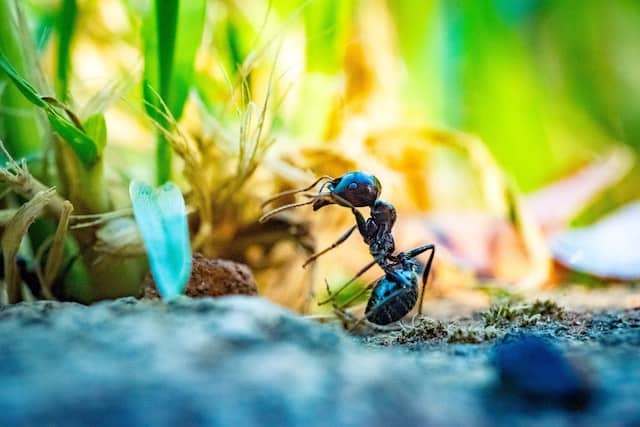
Pharaoh’s Monomorium pharaonis is black-eyed ants with yellow-brown bodies and dark black legs. They have two small segments at the pedicel with six legs. Their size ranges from 3.5 to 6mm for the queen, while workers range from 1.5 to 2mm long. Plus, they possess antennas.
Pharaoh ants cause many pathogenic diseases. They spread salmonella and Streptococcus pyogenes. Moreover, these ants can enter wounds, IV bottles, and even the mouth of patients. Their bite is painful but not poisonous. They also have stingers which are harmless.
Habitat
Pharaohs ants which are native to Africa, have invaded the whole world. It is believed that these ants caused a plague in Egypt; hence they are called pharaoh’s ants.
They live in heated buildings and hospitals where they can find plenty of moisture. The pharaoh ants make their colonies in clothes and piles of trash.
Life
Pharaoh’s ants are tropical species; hence they are most active in warm, humid climates. In the summer, they begin to colonize. The queen mates in the nest; hence no swarms are visible.
The queen can produce around 400 eggs in each batch.
In addition, she can also have 10 to 12 batches in the mating season. The eggs take 38 to 42 days to transform into adult workers. These have a large colony with many reproductive females.
The queen can survive for more than 12 months, while the male dies a few weeks after the breeding process. The worker pharaoh’s ant survives for only ten weeks.
Pharaoh’s ant can survive on almost anything. They can eat meat, fruits, sweets, and even dead insects. They have a balance of proteins and carbohydrates in their diet. They do prefer sugary food.
5. Thief Ants
Thief ants or Solenopsis molesta are yellowish browns. These tiny ants range from 1.5mm to 2.2mm in length. They have antennas with ten segments and two enlarged clubs.
Thief ants have very small stingers which are not powerful enough to pierce human skin. People’s sensitivity can develop reactions to the stings. These ants don’t bite but can transmit pathogens from food to humans.
Habitat
Thief ants are found everywhere. They can be found outdoors under rocks, in wood and soul. Indoor, they infest small spaces like cabinets, loose floor moldings, behind wall paneling, and other hidden areas. They prefer staying near food sources from which they can steal.
Life
Thief ants begin mating flights in summers and early fall. Their reproductive months span from June to September. As the swarms appear, the ants prefer staying indoors for shelter. A thief ant can lay 105 eggs in a day. The queen lays eggs that take a few months to transition from egg to larvae to pupa and then into adults.
Notably, thief ants form multi-queen colonies. Generally, they have smaller colonies with two or more queens but several workers, which include the soldiers and the workers. The soldiers defend the nest, queen, and the eggs while the workers search for food.
Thief ants survive on protein and greasy foods like cheese and butter. They feed on dead insects but prefer sweets like honeydew. These tiny ants can invade packaged goods. They can feed on seeds and larvae too.
6. Tawny (Rasberry) Crazy Ant
Tawny (Rasberry) Crazy Ant, also known as Nylanderia fulva, are native to South Africa and the United States. As their name suggests, these particular species of ants are known for their crazy behavior and unpredictable movements. Typically, they are brown-colored ants and possess a gray sheen.
Habitat
They generally prefer taking shelter in the houses in the autumn when they face a shortage of honeydew, their main food. Otherwise, they can build their colonies outside on the soil beneath any object or at the edges of pavements.
Life
The lifecycle of this specific type of ants revolves around this chain, i.e., egg, larva, pupa, and adult. Normally, they mate in their outside colonies in the spring season.
7. Harvester Ants
Harvester ants, pogonomyrmex, are red to dark brown ants. Their size ranges from 1/4 to 1/2 inches in length. They are giant ants with square-shaped heads and elbowed antennae.
In addition to their massive size, they have large mandibles with long hair. Also, the harvest ants do not have any spines on their body. These ants can bite multiple times and sting too. Their sting injects venom, which makes it painful and medically severe.
Habitat
Harvester ants inhabit prairies and grasslands. They are found in the southwestern states of the USA.
These ants don’t inhabit homes and prefer staying outdoors in the soil. The nests are usually found deep in the ground, underneath lawns, plains, and playgrounds. Furthermore, they make an entrance hole to reach their nests.
Life
These ants are most active in hot, humid conditions. Harvester ants begin to breed from June to October. When swarming, they often take mating flights to higher spots. Males die after mating while females return to establish colonies.
Their eggs go through several stages to become an adult. These workers then care for the nest, food, and queen.
Please note that the colonies of harvester ants can live up to 17 years. The ant itself survives for three months but can die in direct sunlight.
Harvester ants have mouth parts designed for chewing; hence they eat seeds, grass, and dead insects. They also prefer fruits and vegetables to feed on and store their food in their colony.
8. Odorous House Ants
Odorous house ants, also known as tapinoma sessile, are comparatively big-sized ants. These types of ants generally have black or brown bodies. Their sizes range from 1.6 inches to 1.8 inches. As the name of this ant species suggests, they spread a strong rotten coconut or stale butter smell while being squished.
Habitat
Typically, the ants feed themselves on dead insects or sugary food particles. Moreover, you can find these ants in the kitchens, bathrooms, or even within the cupboards. To sum up, they prefer building their nests within homes or near food residue places.
Life
Like other ant species, the odorous house ants prefer living in the colonies – the colonies within houses. There are normally one or maybe two queens in each colony.
However, the number of worker ants in each colony can go beyond 100,000. Also, the queen of the odorous house ant can produce ten hundred workers and hundreds of other reproductive ants.
9. Black House Ant
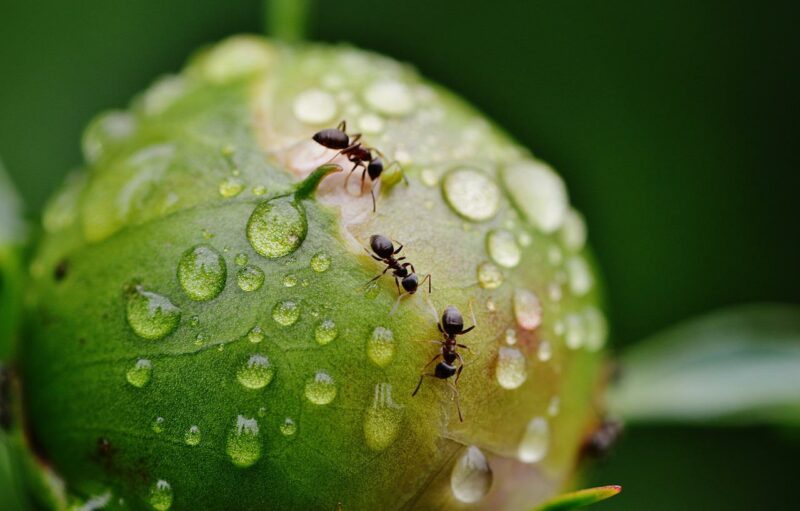
The black house ant, Ochetellus glaber, is a shiny black ant. They have a prominent petiole and smaller size. They range from 2.5 to 3 mm in length. This tiny insect has six legs. Overall, the black House ant has an oval-shaped segmented body. Importantly, these ants have antennas too.
Also, they have mandibles and a sting but owing to their small size. They are harmless. Moreover, these ants can spread pathogens to humans, posing a threat to health.
Habitat
These house-infesting species are native to Australia. They invade kitchens and garbage. These common ants can also be found outdoors in gardens, under stones, and in dry logs. They prefer dark, protected areas for their colonies.
Life
Blackhouse plants are mostly active in summers. They prefer nighttime to search for food. Their swarms appear from June to August. The queen mates to produce eggs that undergo a 69-day metamorphosis cycle.
This worker takes care of the colony’s nest, larvae, and food. The queen is more significant than the workers. In addition, these ants can survive for almost a decade or more. Their colonies can last for more time.
Black house ants are omnivores and hence can eat almost anything. They prefer sugar, plant secretions, fruits, and vegetables. They also feed on other insects and grease to fulfill their protein requirement.
10. Sugar Ant
Sugar ant, Camponotus consobrinus, has an orange-brown middle with a black head and abdomen. The females have orange-colored bodies while the males are black. Males also possess wings.
The size of the ants is 2.5mm to 18mm long. The ants have soldiers who look robust, while workers appear slender. Sugar ants cannot sting, but they have a powerful jaw, making their bite painful. But the bite doesn’t cause any severity.
Habitat
Typically, sugar ants inhabit warm and damp places. However, they are native to Australia. You can find them in forests and woodlands. The sugar ants prefer making holes in the wood for making their colonies.
They can also be found indoors in the kitchen and bathrooms, where they find food and moisture. They can infest houses.
Life
Sugar ants become more active in the summer and rainy seasons. The winged queen mates and lays 5 to 60 eggs underground. The male dies after mating. The eggs undergo a four-stage metamorphosis from egg to adult. This cycle lasts for a maximum of ten weeks.
In this species, a single queen forms a new colony. The adult ants become workers who dig out from the best to forge for food. When the number of ants increases, they build chambers within their colony. The worker sugar ant lives for seven years while the queen lives for 15.
Sugar ants feed on sweet foods. They prefer nectar, honeydew, maple syrup, and even plant-eating invertebrates. They have more powerful sugar receptors than any other ants.
Wrapping Up on Top 10 Most Unique Ant Species
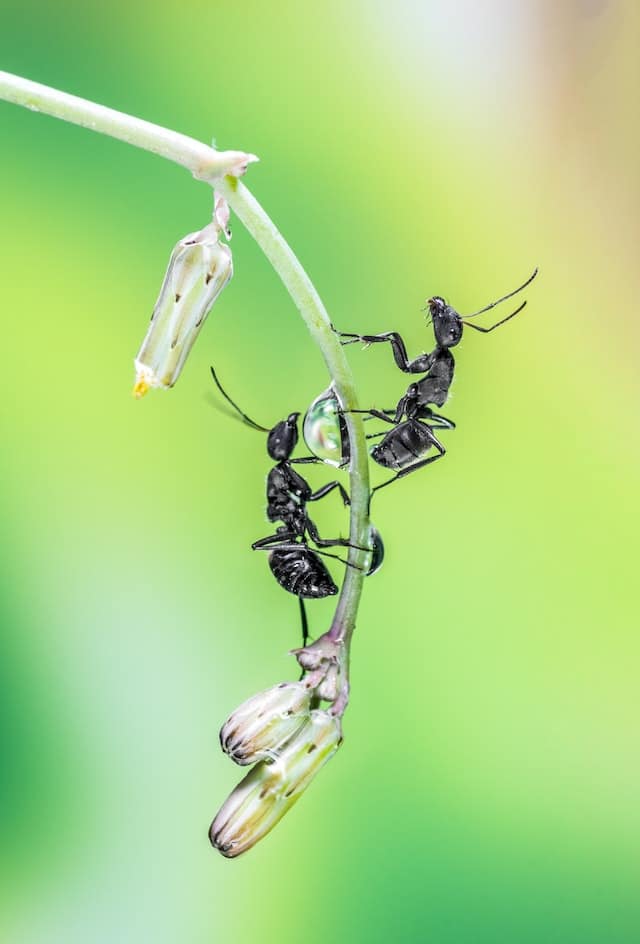
So far, we have discussed the top ten ant species. Ants are one of the most common insects existing on this planet. The ants are generally known for their excellent organization skills and habitation. There are around 10,000 species of ants on this planet.
As per the scientific knowledge the mass of ants is almost the same as that of people which is around ten trillion ants, but to be honest, no one actually knows.
To identify the ant’s species, you need to carefully look at their body which typically comprises three parts, e.g., head, thorax, and abdomen.
If you enjoyed reading this blog you may find some of our other blogs really interesting! For example:
11 Astonishing Flying Spiders Facts
Where To See Black Widow Spider?
- 5 Best Places to See African Wild Dogs - April 24, 2024
- Best Places to See Giant Pandas - April 23, 2024
- Sea Snakes: A Complete Guide - April 23, 2024

